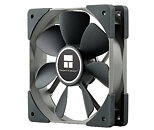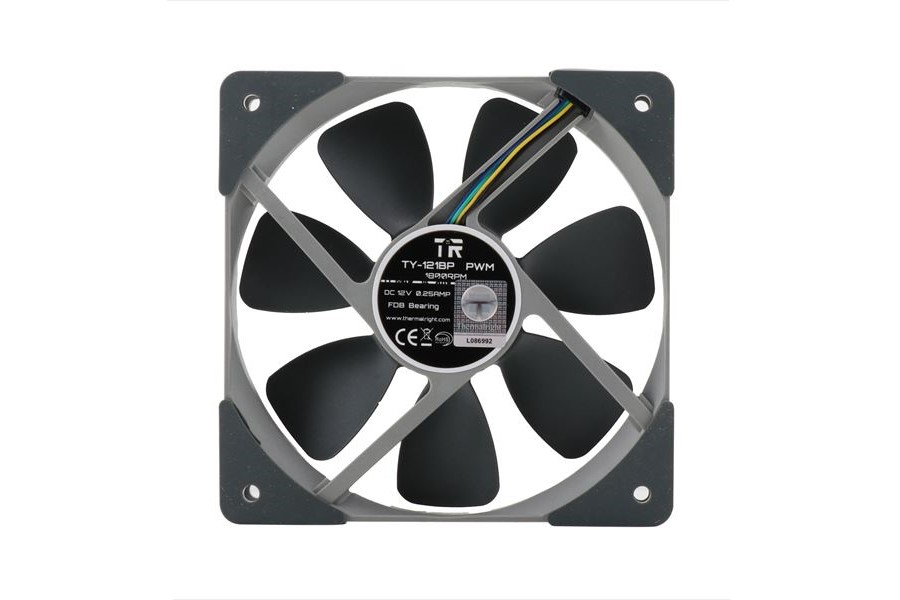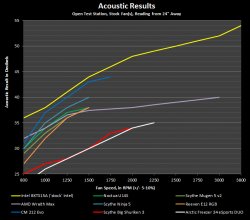- Joined
- Oct 9, 2007
- Messages
- 47,886 (7.38/day)
- Location
- Dublin, Ireland
| System Name | RBMK-1000 |
|---|---|
| Processor | AMD Ryzen 7 5700G |
| Motherboard | Gigabyte B550 AORUS Elite V2 |
| Cooling | DeepCool Gammax L240 V2 |
| Memory | 2x 16GB DDR4-3200 |
| Video Card(s) | Galax RTX 4070 Ti EX |
| Storage | Samsung 990 1TB |
| Display(s) | BenQ 1440p 60 Hz 27-inch |
| Case | Corsair Carbide 100R |
| Audio Device(s) | ASUS SupremeFX S1220A |
| Power Supply | Cooler Master MWE Gold 650W |
| Mouse | ASUS ROG Strix Impact |
| Keyboard | Gamdias Hermes E2 |
| Software | Windows 11 Pro |
Thermalright introduced the TY-121BP FDB, a 120 mm case fan optimized for circulation applications. Built in a standard 25 mm-thick 120 mm format with rubberized frame mounts. The package includes rubber bolts in addition to metal screws. The fan features a long life (>40,000-hours rated) fluid-dynamic bearing. Taking in 4-pin (PWM) input, it spins between 600 - 1,800 RPM pushing 25.76 CFM of air at its lowest speed, and 77.28 CFM at top speed, with up to 2.70 mm H2O air-pressure. The noise output proportionately ranges between 19 to 25 dBA. The fan is currently selling in single-piece packages priced at $20, multi-fan packs are also in the works.




View at TechPowerUp Main Site




View at TechPowerUp Main Site









 Of course TY-121BP is case fan, and please check Thermalright's the other product, TA120, which fan's shape it used is the same with TY-121BP. Tell me which "case fan" got enough air pressure to pass through the densely fins, don't tell me sucks S12A can.
Of course TY-121BP is case fan, and please check Thermalright's the other product, TA120, which fan's shape it used is the same with TY-121BP. Tell me which "case fan" got enough air pressure to pass through the densely fins, don't tell me sucks S12A can.